Petrified Forest National Park
February 2024Contents
What is Petrified Wood?
Where’s the River?
Making History
Who Cut the Wood?
Painted Desert
What is Petrified Wood?
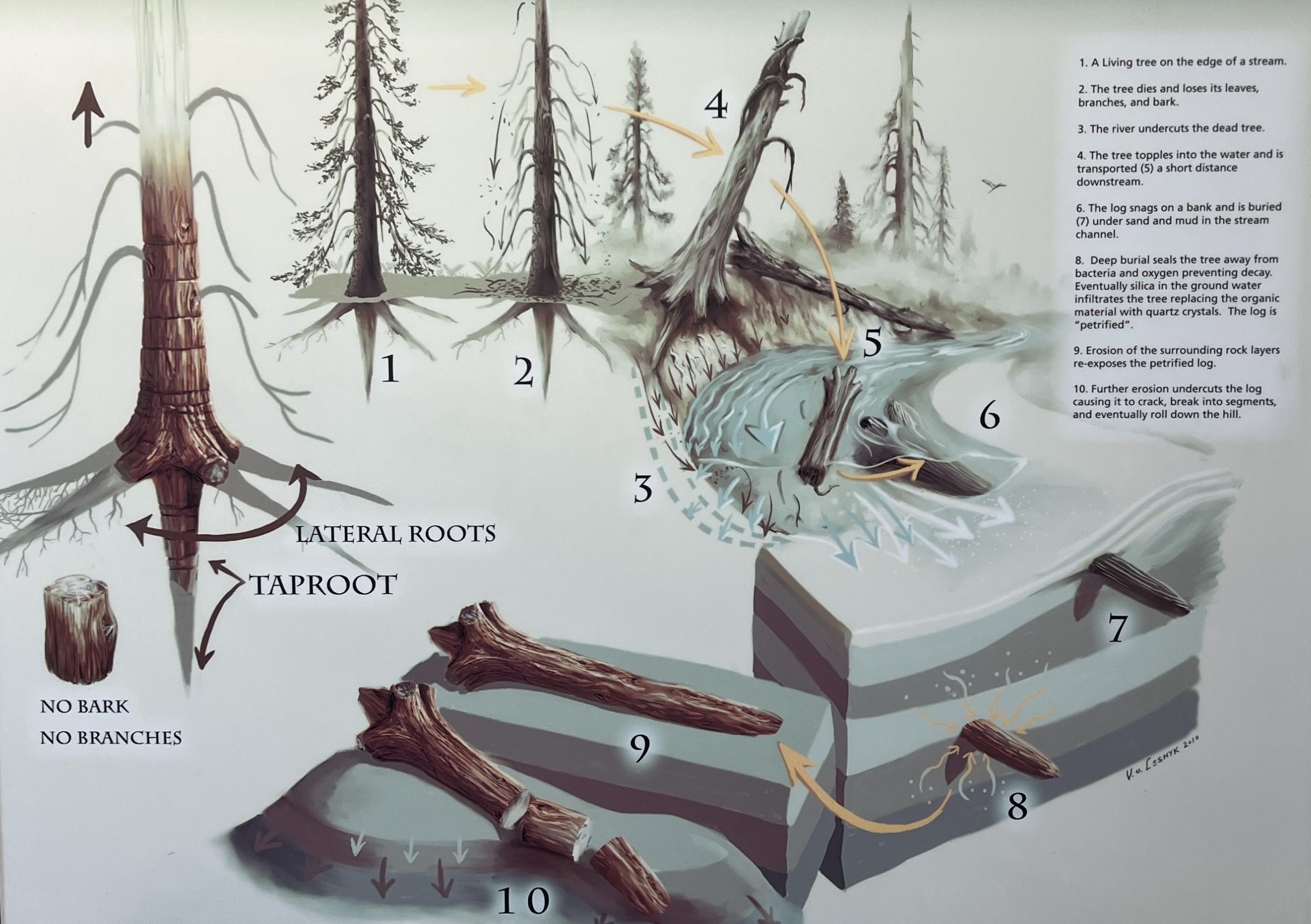
Petrified wood is actually stone. All of the original plant material has been replaced by minerals—in perfect detail.
Millions of years ago, the “trees” we now see at Petrified Forest National Park, died and fell into a river. They were buried beneath layers of silt, mud, sand, and volcanic ash. This burial protected them from decay. Mineral-laden ground water percolated through the layers, carrying silica from the volcanic ash and other trace minerals. The absorbent dead wood became saturated with these minerals. The silica (quartz) crystals slowly bonded with the cells of the tree, replicating the organic material and eventually replacing it completely.
We can see the “forest” now because all those layers of mud and sand have eroded away, exposing the stone logs.
Rainbow Forest
Before going to Petrified Forest NP, I didn’t know what to expect, and I definitely didn’t know it was going to be this colorful!
Iron, manganese, and other trace metals seeped into the wood along with the quartz, creating amazing art. No two logs are the same.

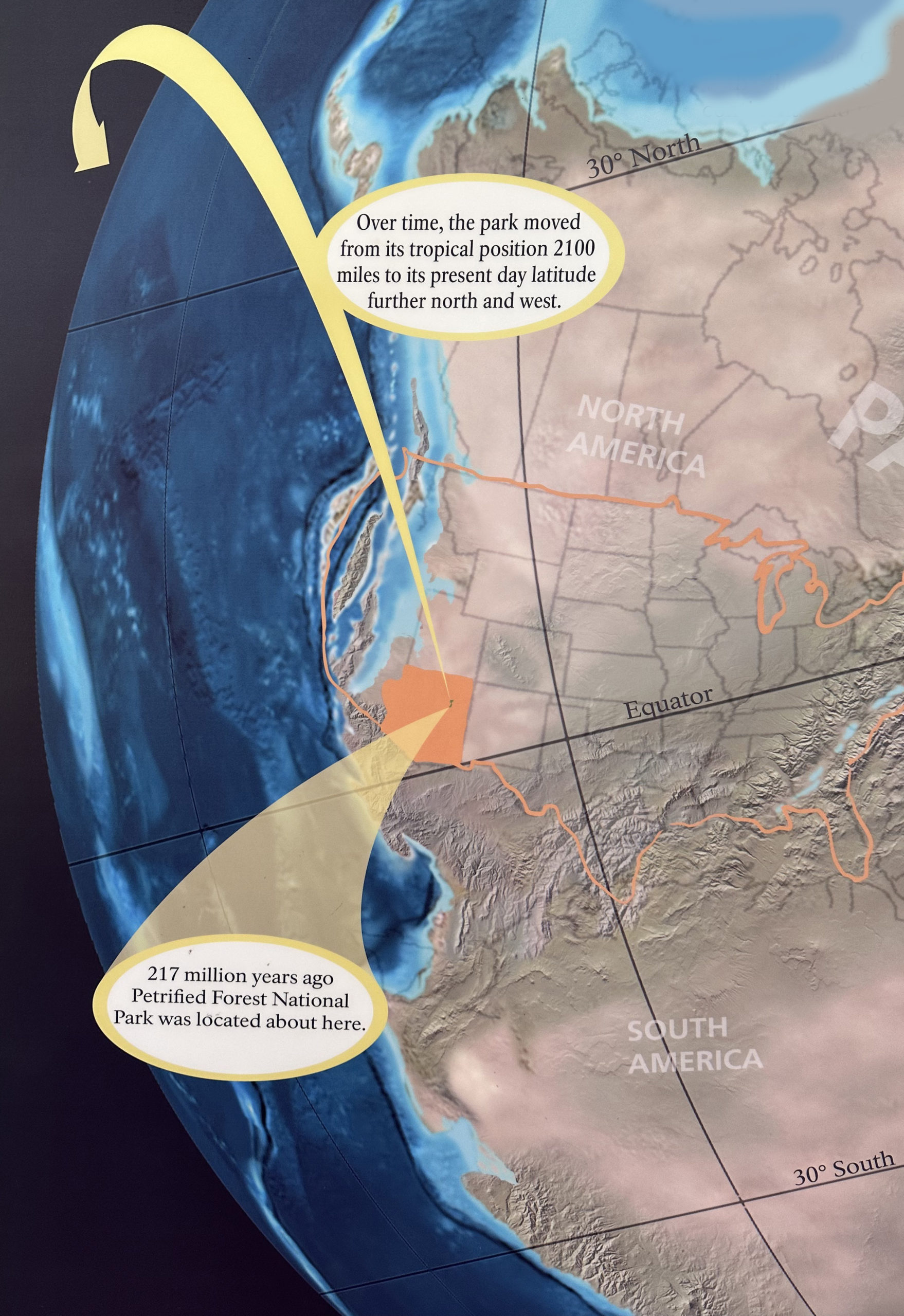
Where's the River?
When these fossilized trees were alive, about 217 million years ago, Arizona was sitting near the equator, in a land of tropical forests, swamps, and rivers.
The high concentration of petrified wood in this area is due to log jams in the river. The dead trees that fell into the river were carried downstream and caught up together, then buried and preserved in stone.
Making History
This giant in the background measures 35 feet long and weighs approximately 44 tons. This log, named “Old Faithful”, has received many visitors.
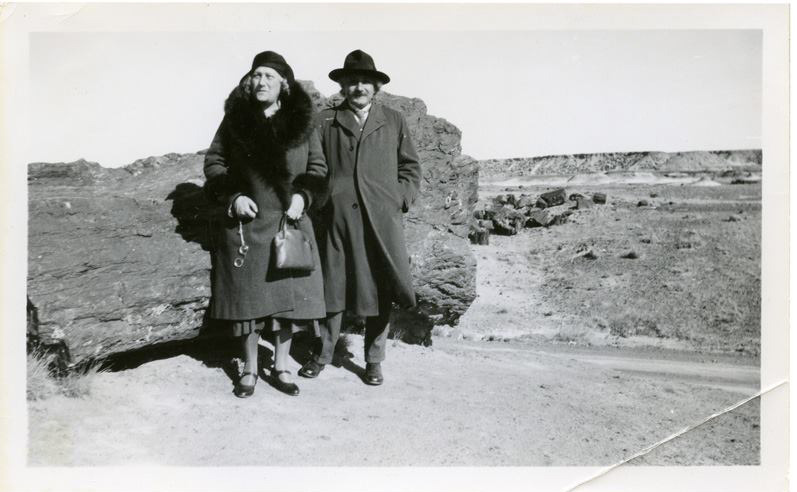
On March 1, 1931, Dr. and Mrs. Albert Einstein visited Petrified Forest National Park.
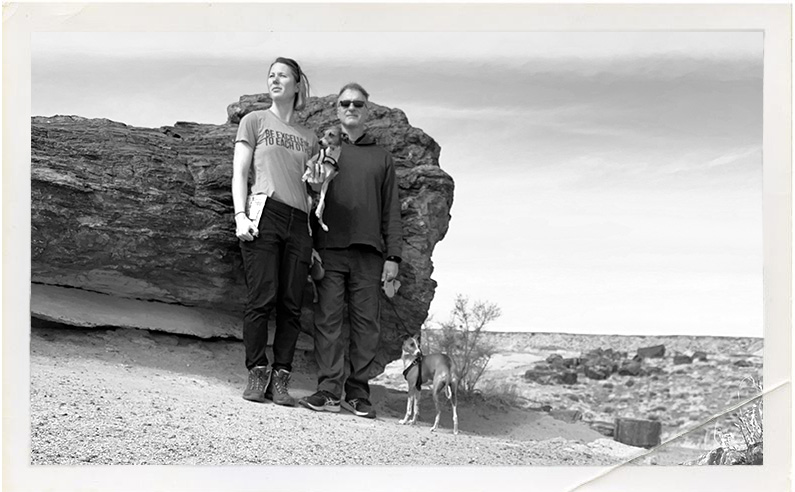
On February 24, 2024, the not-quite-as-famous Norian family comes to learn about the park.
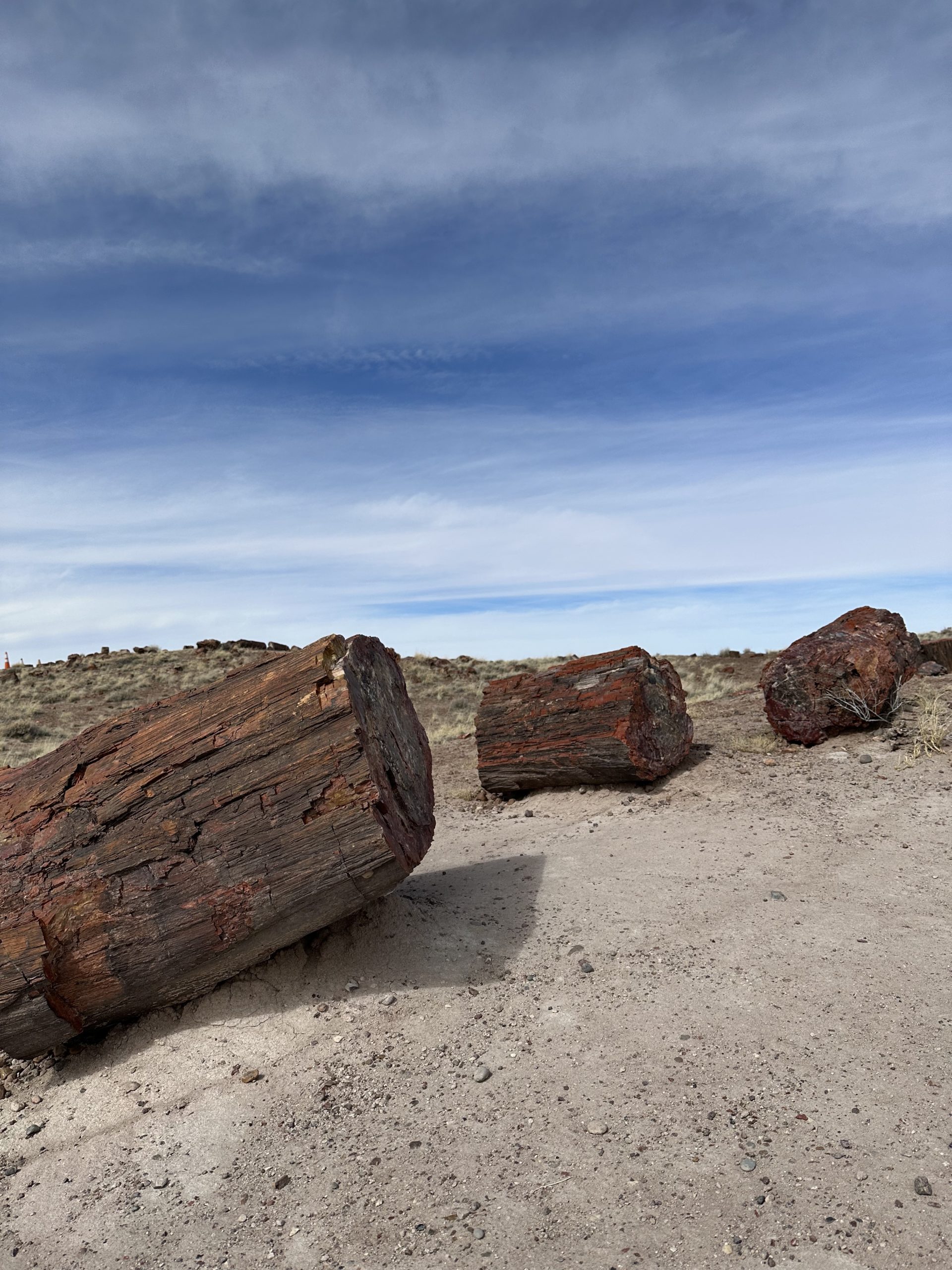
Who Cut the Wood?
Many logs have cracked and broken apart so cleanly, they appear to have been cut.
These quartz logs are very hard, but also very brittle, easily fracturing under stress in clean angles across the shortest area, like snapping a piece of chalk.
Cracks that formed while the stone logs were still buried and encased by surrounding rock were widened with the help of gravity and ice, and the pieces completely separated as they were eroded out of their rock layers.
Some log pieces stayed grouped together, while others rolled down hills or over ledges as the rock beneath them also eroded out.
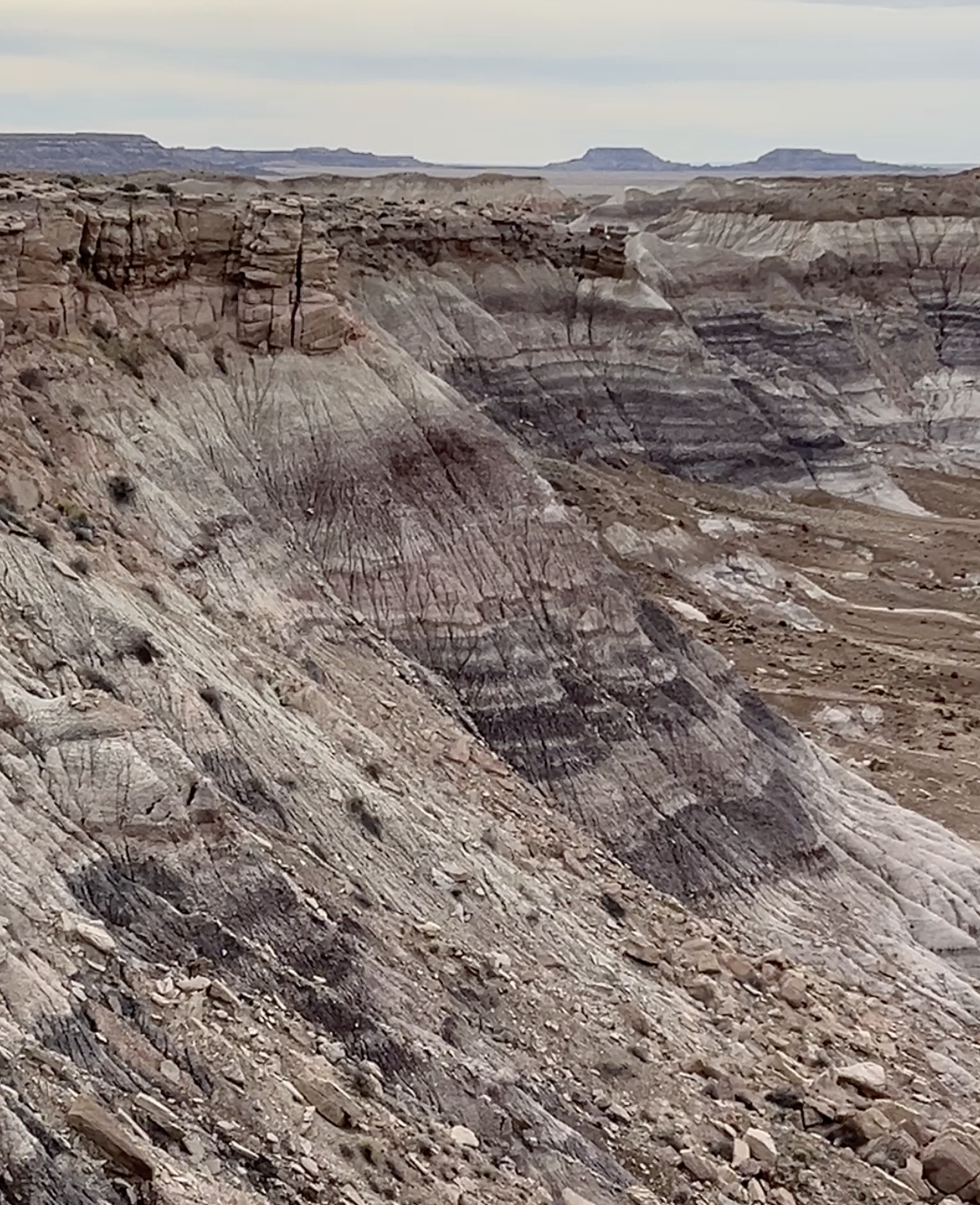
Painted Desert
The middle and northern sections of the park are part of Arizona’s painted desert “badlands.”
A badland is an area of soft rock strata that is eroded into many gullies and irregular shapes where vegetation cannot take hold. Water flows down the channels, carrying rock and soil with it.
Like the petrified wood, the pink, red, blue, and purple hues come from mineral deposits in the rock layers.
A Half Day was Not Enough
When we arrived at the park, we were surprised by signs that said the park was closing at 5:30pm. Like “be in your car by 5:30 or get eaten by coyotes” kind of signs.
This left us with a half day to explore, and we didn’t get to do as much hiking as we would have liked. This puts Petrified Forest on our “Visit Again” list.
